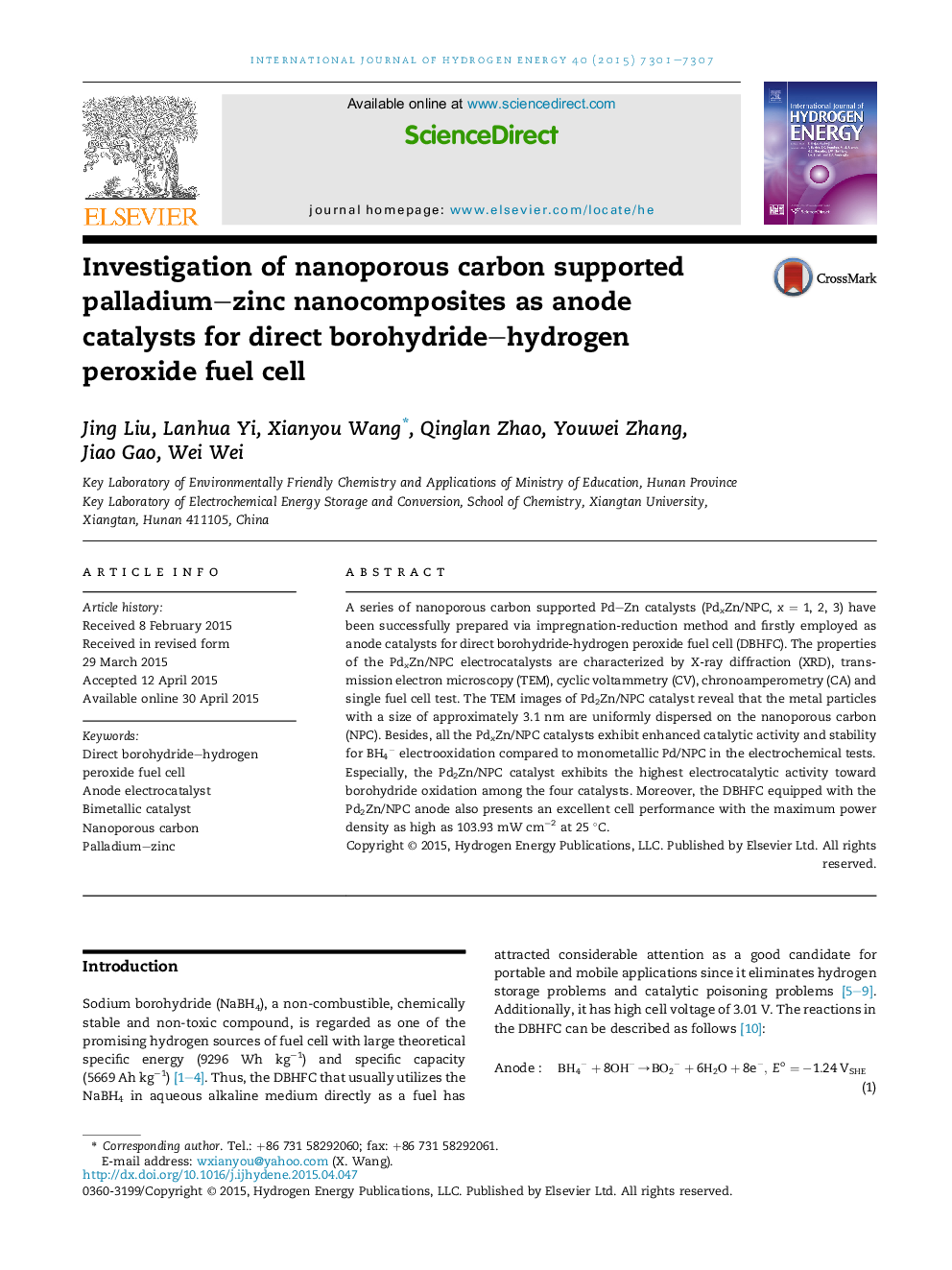| Article ID | Journal | Published Year | Pages | File Type |
|---|---|---|---|---|
| 1270981 | International Journal of Hydrogen Energy | 2015 | 7 Pages |
•NPC supported Pd–Zn nanocomposites are firstly used as anode catalysts for DBHFC.•The average size of the Pd–Zn nanoparticles is around 3.1 nm.•The DBHFC with Pd2Zn/NPC anode shows the maximum power density of 103.93 mW cm−2.
A series of nanoporous carbon supported Pd–Zn catalysts (PdxZn/NPC, x = 1, 2, 3) have been successfully prepared via impregnation-reduction method and firstly employed as anode catalysts for direct borohydride-hydrogen peroxide fuel cell (DBHFC). The properties of the PdxZn/NPC electrocatalysts are characterized by X-ray diffraction (XRD), transmission electron microscopy (TEM), cyclic voltammetry (CV), chronoamperometry (CA) and single fuel cell test. The TEM images of Pd2Zn/NPC catalyst reveal that the metal particles with a size of approximately 3.1 nm are uniformly dispersed on the nanoporous carbon (NPC). Besides, all the PdxZn/NPC catalysts exhibit enhanced catalytic activity and stability for BH4−BH4− electrooxidation compared to monometallic Pd/NPC in the electrochemical tests. Especially, the Pd2Zn/NPC catalyst exhibits the highest electrocatalytic activity toward borohydride oxidation among the four catalysts. Moreover, the DBHFC equipped with the Pd2Zn/NPC anode also presents an excellent cell performance with the maximum power density as high as 103.93 mW cm−2 at 25 °C.
